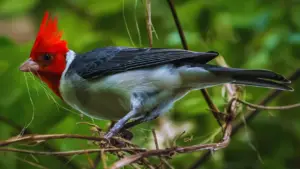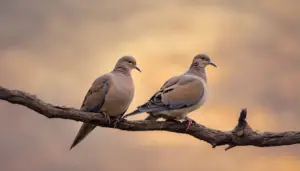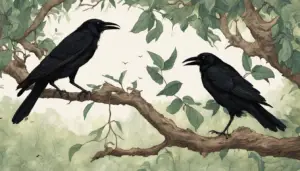If you are a bird enthusiast, you might have noticed a group of avian creatures with delicate and elongated beaks. These are small birds with long beaks, a fascinating group of birds that have evolved unique adaptations to survive in various habitats around the world.
In this article, we will take a closer look at the world of small birds with long beaks, exploring their unique physical adaptations, feeding habits, natural habitats, diverse species, behavioral patterns, reproductive life cycles, and interactions with humans. From their preferred ecosystems to their unusual feeding techniques, these birds have a lot to offer in terms of intrigue and interest.
Read on to discover the captivating world of small birds with long beaks and learn about their remarkable characteristics that make them one of the most intriguing groups of birds in the world.
Unique Adaptations of Small Birds with Long Beaks
Small birds with long beaks have unique physical adaptations that allow them to thrive in their natural habitats. Their slender beaks and small sizes aid them in various aspects of their lives, such as feeding and survival.
The long, slender beaks of these birds are a crucial tool for obtaining food. Some species have beaks that can probe deep into crevices, allowing them to extract insects and other small prey. Others have beaks that are curved, perfect for catching fish or other aquatic creatures.
In addition to their beaks, these birds have other adaptations that make them well-suited to their environments. Some have specially adapted feet, such as long toes or talons, that allow them to perch on branches or cling to tree trunks. Others have streamlined bodies that aid in flight and make them more agile while hunting prey.
Examples of Unique Adaptations
One example of a small bird with a unique adaptation is the woodpecker finch found in the Galapagos islands. This bird has a sturdy, hooked beak that helps it hammer into wood to extract insects and grubs, similar to a woodpecker. Another example is the long-billed curlew, which has a beak that can probe deep into the sand to find crustaceans and other small prey.
| Bird Species | Adaptation |
|---|---|
| Woodpecker Finch | Sturdy, hooked beak for hammering into wood to extract insects and grubs |
| Long-billed Curlew | Long, curved beak for probing deep into the sand to find crustaceans and other small prey |
Small birds with long beaks have evolved to adapt to their natural habitats, giving them a unique advantage in finding food and avoiding predators. Their physical adaptations make them fascinating creatures to observe in the wild.
Feeding Habits of Small Birds with Long Beaks
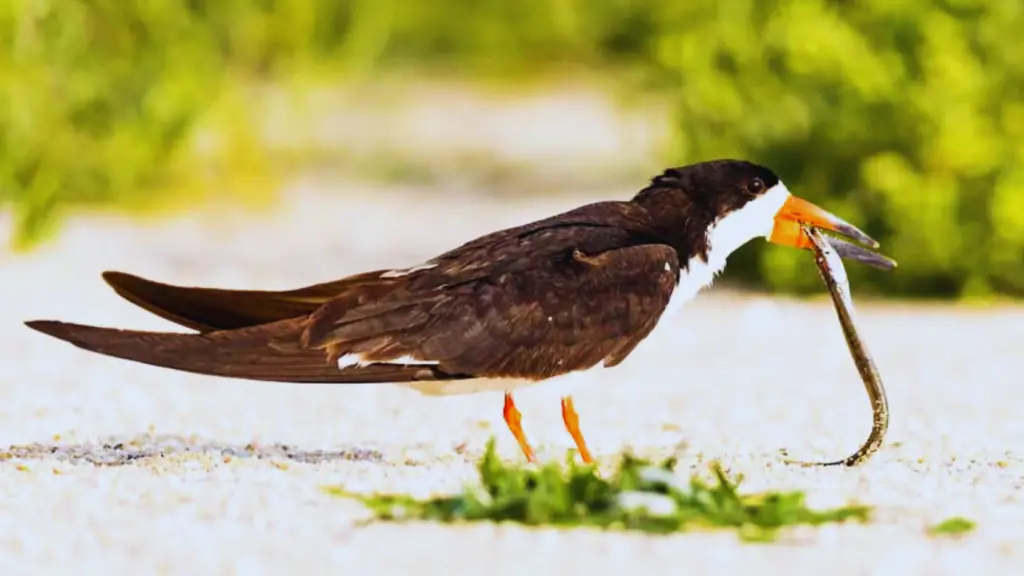
Small birds with long beaks have adapted their feeding habits to suit their unique physical characteristics. Their long, slender beaks help them to forage for food in narrower spaces and reach deeper into flowers, plants, and soil. These avian creatures are highly skilled at obtaining food in various environments, from dry deserts to lush rainforests.
Small birds with long beaks feed on a diverse array of food sources, including insects, seeds, nectar, fruit, and even small vertebrates. Their feeding techniques may vary based on their preferred food. For example, birds that feed on nectar often hover in the air as they dip their beaks into flowers to extract the sweet liquid. Meanwhile, insectivorous birds use their sharp beaks to catch insects on the fly or extract them from crevices.
| Food Source | Feeding Technique |
|---|---|
| Insects | Using their beaks to catch insects on the fly or extract them from crevices. |
| Nectar | Hovering in the air as they dip their beaks into flowers to extract the sweet liquid. |
| Seeds | Cracking open the seed shells with their beaks and using their tongues to extract the nut inside. |
| Fruit | Using their beaks to peck at and remove the fruit flesh. |
| Small Vertebrates | Grabbing their prey with their beaks and using their sharp talons to hold onto it. |
Small birds with long beaks play a crucial role in pollination, particularly those that feed on nectar. These birds unintentionally transfer pollen from flower to flower as they extract nectar with their beaks. They are also important natural pest controllers, as many species of small birds with long beaks feed on insects that can cause damage to crops or gardens.
Do small birds with long beaks consume other birds?
While many species of small birds with long beaks are insectivorous or nectarivorous, there are some that feed on smaller birds. The sharp-beaked shrike, for example, is known to impale its prey on thorns or spikes before consuming it. However, it is important to note that this behavior is not common among all small birds with long beaks.
Thriving in Natural Habitats: Small Birds with Long Beaks
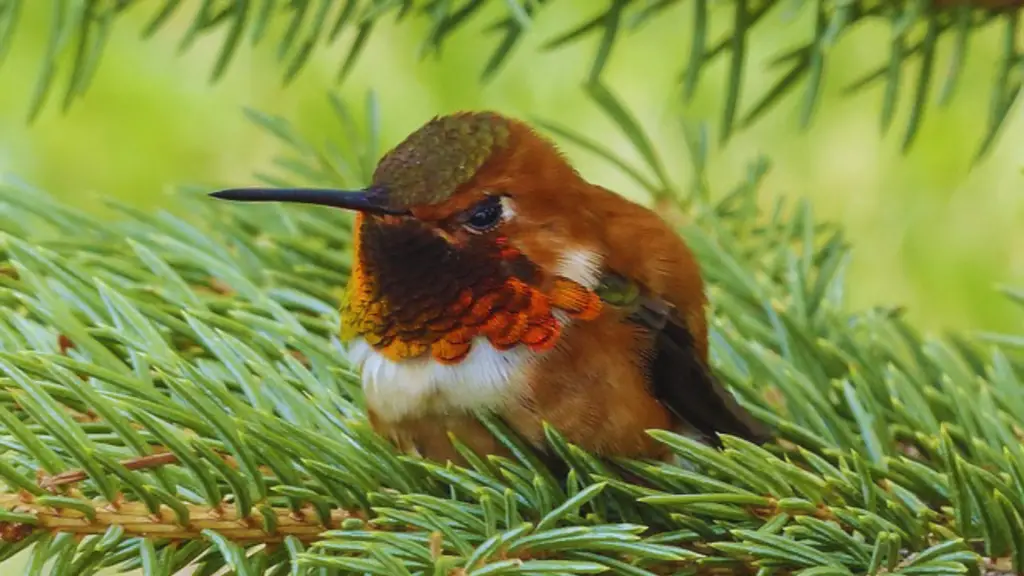
Small birds with long beaks are found in a variety of natural habitats, including forested areas, grasslands, wetlands, and deserts. They have adapted to survive in these different environments, utilizing their unique physical characteristics to obtain food and protect themselves from predators.
In forested areas, birds such as the Brown Creeper and the Pygmy Nuthatch use their slender, curved beaks to extract insects and larvae from tree bark. Their small size allows them to navigate easily through the dense foliage, and their brown and gray plumage provides excellent camouflage against the tree trunks.
Grasslands are home to many species of small birds with long beaks, such as the Grasshopper Sparrow and the Bobolink. These birds use their sharp, pointed beaks to catch insects in mid-air or to pluck seeds from the grasses. Their coloring often blends in with the grass, making them difficult to spot by predators.
Wetlands provide an ideal habitat for birds like the Common Snipe and the Woodcock, which use their long, straight beaks to probe mud and soil for invertebrates. Their mottled brown plumage also helps them blend in with their surroundings.
Deserts are a challenging environment for any species, but birds such as the Phainopepla and the Elf Owl have adapted to survive in these harsh conditions. With their slender, curved beaks, they can extract insects and berries from cactus plants and desert shrubs. Their dark plumage helps absorb heat during the daytime, while their size allows them to hide in small crevices and burrows.
Species Diversity of Small Birds with Long Beaks
Small birds with long beaks are found in different regions all around the world. From the jungles of South America to the arid deserts of Africa, these avian creatures have adapted to thrive in various environments. Here are some notable examples of small birds with long beaks:
| Species | Region | Characteristics |
|---|---|---|
| Hummingbirds | Americas | Small, colorful, and fast-flying birds with elongated beaks specially adapted for nectar feeding. |
| Sword-billed Hummingbirds | Andes Mountains | With a bill longer than its body, this bird is the only species of bird that cannot fold its wings due to the length of its beak. |
| Kagu | New Caledonia | A flightless bird that is known for its long, curved beak used for probing invertebrates out of the ground. |
| Kiwi | New Zealand | A flightless bird with a long beak that is used to probe the ground and locate insects. |
These are just a few examples of the diverse range of small birds with long beaks found around the world. Each species has unique characteristics that contribute to their survival in their respective environments.
Behavioral Patterns of Small Birds with Long Beaks
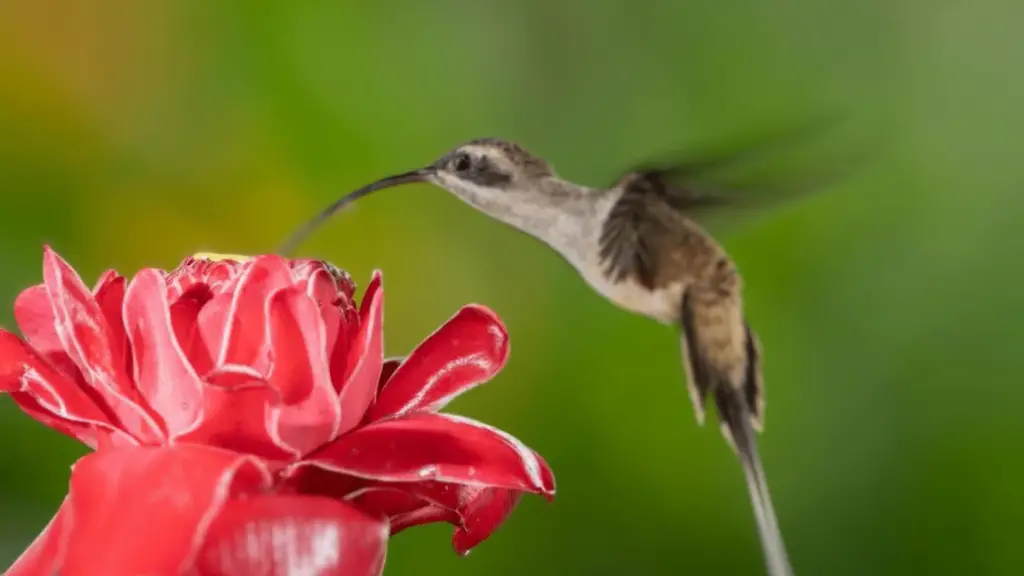
Small birds with long beaks exhibit fascinating behavioral patterns that have caught the interest of bird watchers and scientists alike. Here are some interesting insights into their social dynamics:
Communication Methods
Small birds with long beaks use a variety of communication methods to interact with each other. They use chirps, songs, and body language to convey messages to other members of their species. Some birds, such as hummingbirds, also use visual cues like tail feathers to communicate and attract mates.
Mating Behaviors
Mating behaviors vary among different species of small birds with long beaks. Some birds perform elaborate courtship displays, while others engage in more aggressive behaviors to attract a mate. For example, male sword-billed hummingbirds use their long, thin beaks to sword-fight with other males to impress females.
Interactions with Other Species
Small birds with long beaks often interact with other species in their ecosystems. Some birds, like the honeycreeper, have evolved to feed on specialized flowers that are only accessible to birds with long, curved beaks. These co-evolutionary relationships have led to fascinating adaptations on both sides.
Migratory Patterns
Many species of small birds with long beaks are migratory and travel long distances to breed or overwinter. They form flocks and follow specific routes, often navigating using the Earth’s magnetic field. Scientists are still studying their complex migration patterns to better understand how they manage to undertake such long journeys.
Social Hierarchies
Small birds with long beaks often establish social hierarchies within their flocks. Dominant birds have access to the best resources, including food and mates. Some birds, like the long-billed hermit hummingbird, have evolved to be solitary and actively avoid other birds, even members of their own species.
Reproduction and Life Cycle of Small Birds with Long Beaks
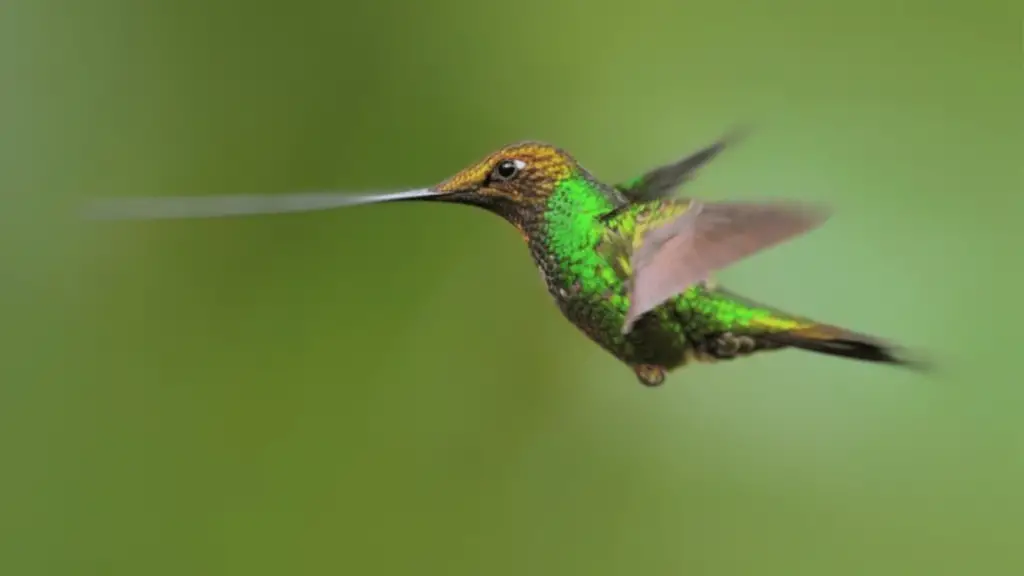
Small birds with long beaks have diverse mating rituals and nesting behaviors. Their reproductive cycle is closely tied to seasonal changes and environmental factors.
Mating Rituals
Mating rituals vary between species, but most involve elaborate courtship displays. Males may show off their long and colorful beaks, perform intricate dances or songs to attract females.
Once a mate is chosen, both birds work together to prepare the nesting site, gather nesting materials, and build the nest. Some species may mate for life, while others may find new partners each breeding season.
Nesting Behaviors
Most small birds with long beaks build nests that are well-hidden and difficult to find. They use materials such as twigs, grasses, and feathers to create intricate structures that are often placed in trees, shrubs, or on the ground.
After the nest is constructed, females lay a clutch of eggs that is typically small in size, ranging from one to four eggs depending on the species. During the incubation period, which can last for several weeks, both parents take turns sitting on the eggs and protecting the nest from predators.
Egg Development
The development of the eggs is closely tied to environmental factors such as temperature and humidity. Once the eggs hatch, the parents continue to care for their offspring by bringing them food and keeping them warm.
Growth Stages
The growth stages of small birds with long beaks are rapid, with offspring becoming independent and leaving the nest within a few weeks of hatching. Some species may have multiple broods per breeding season, allowing them to raise several offspring each year.
Overall, the reproduction and life cycle of small birds with long beaks is a fascinating and intricate process that is closely tied to the environment and the mating behaviors of each individual species.
Conservation Status and Threats to Small Birds with Long Beaks

Small birds with long beaks are facing a variety of threats to their populations, making their conservation status a significant concern. Habitat loss due to deforestation and urbanization is a primary threat to their survival, with the destruction of their natural environments making it difficult for them to thrive. Pollution and the presence of invasive species also contribute to the decline of these birds.
Conservation Efforts
Conservation efforts are crucial to the preservation of small birds with long beaks. Several organizations aim to conserve these species, working to protect their habitats and raise awareness about the importance of their populations. The International Union for Conservation of Nature (IUCN) has classified some species as vulnerable or endangered, highlighting the need for conservation efforts.
Furthermore, some conservation efforts focus on rehabilitating injured or sick birds and reintroducing them to the wild. Research is also being conducted to understand the behavior and ecological needs of these birds, giving conservationists valuable information to guide their efforts.
How Can We Help?
Individuals can also contribute to the conservation of these birds. Supporting organizations that focus on the conservation of small birds with long beaks and their habitats is an effective way to help. Avoiding the use of pesticides, reducing plastic use and properly disposing of waste can also help to mitigate their impact on the environment.
Additionally, birdwatching and ecotourism can provide economic incentives for communities to engage in conservation activities, making it a sustainable form of conservation.
It is crucial to recognize the importance of small birds with long beaks in their ecosystems and the need for their conservation. Through efforts by both individuals and organizations, these avian creatures can continue to thrive in their natural habitats for generations to come.
Interactions with Humans: Small Birds with Long Beaks
Small birds with long beaks have a rich history of interactions with humans. They have been depicted in folklore, art, literature, and are beloved by birdwatchers worldwide. However, human actions also pose a significant threat to their populations, and it is essential to ensure their long-term survival.
One of the most well-known small birds with a long beak is the hummingbird. These tiny birds with their iridescent feathers and darting movements have captured the hearts of people worldwide. They are prevalent in mythology and are often associated with the sun and its energy.
Another small bird with a long beak that has become a symbol of conservation is the Kiwi. These flightless birds are native to New Zealand and are currently endangered due to habitat loss and predation by introduced species. Despite their plight, the Kiwi is widely celebrated in New Zealanders’ culture and is one of the country’s most iconic animals.
Birdwatchers worldwide also flock to observe small birds with long beaks. The diversity of species and their unique characteristics make them fascinating subjects for observation and study. They also play a crucial role in the ecosystem, providing pollination, pest control, and seed dispersal services.
However, human activities, such as habitat destruction, pollution, and climate change, pose a severe threat to the populations of small birds with long beaks. Conservation efforts are necessary to protect their survival, including the establishment of protected areas, habitat restoration, and public education initiatives.
“Small birds with long beaks are significant cultural and ecological symbols, but also serve as a reminder of the urgent need to protect biodiversity and preserve our natural world.”
Fun Facts About Small Birds with Long Beaks
Small birds with long beaks are fascinating creatures with unique adaptations and behaviors. Here are some fun facts to expand your knowledge and appreciation for these avian wonders.
- The Sword-billed Hummingbird has the longest bill, relative to body size, of any bird species in the world. Its bill is longer than its body, allowing it to drink nectar from flowers with long corollas that other hummingbirds cannot access.
- The Kiwi bird, native to New Zealand, has a long beak that it uses to probe for insects and grubs in the ground. It has nostrils at the end of its beak, allowing it to smell its prey.
- The Curlew Sandpiper, a migratory shorebird, has a long and curved beak ideal for probing into sand and mud for small crustaceans and insects.
- The Long-billed Thrasher, found in the southwestern United States and northern Mexico, has a long, thin beak that it uses to pry insects from tree bark and cacti. It also uses its beak to build elaborate nests out of thorny twigs.
- The Toco Toucan, native to South America, has a large and colorful beak that it uses to pluck fruit from trees and throw it in the air to catch in its mouth. Its beak also functions as a cooling system, helping regulate its body temperature in hot climates.
These are just a few examples of the diverse and remarkable species of small birds with long beaks. Whether they use their beaks for feeding, nesting, or communication, these birds have adapted to thrive in their unique environments and capture our imagination with their impressive physical attributes.
FAQs About Small Birds with Long Beaks
Are all small birds with long beaks carnivorous?
No, not all small birds with long beaks are carnivorous. Some species, such as the Northern Jacana, primarily feed on insects and other small invertebrates.
Do small birds with long beaks always have slender beaks?
Yes, most small birds with long beaks have slender, needle-like beaks. This adaptation helps them probe crevices and small spaces for food.
How do small birds with long beaks defend themselves from predators?
Small birds with long beaks have several defense mechanisms to protect themselves from predators. Some species, such as the American Avocet, use their long beaks to strike at predators or ward them off. Other species, such as the Black Skimmer, have specialized wings that allow them to turn quickly and evade predators.
What is the purpose of the long beak on a bird like the Sword-billed Hummingbird?
The long beak of a Sword-billed Hummingbird is adapted for feeding on long, tubular flowers. The length of the beak allows the bird to reach the nectar inside the flower without having to compete with other birds for access.
Are small birds with long beaks commonly kept as pets?
While some species of small birds with long beaks are kept as pets, it is important to note that many of these birds are protected and should not be kept without proper permits. Additionally, some species may not make suitable pets due to their specific dietary and habitat needs.
What can I do to help conserve small birds with long beaks?
You can help conserve small birds with long beaks by supporting conservation efforts and organizations, reducing your use of pesticides and other harmful chemicals that can affect their habitats, and spreading awareness about the importance of protecting these unique avian species.






